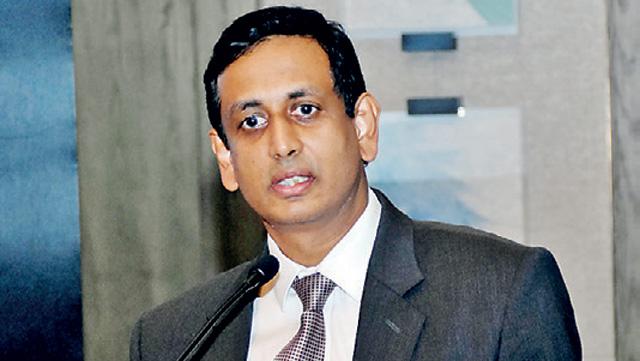Reply To:
Name - Reply Comment
By Nishel Fernando

The government needs to make crucial policy decisions to position Colombo as a multicultural mecca for expats with a favourable set of policies targeting them while providing solutions to Colombo’s long-overdue middle-income housing issue to fully harness the transformative power of the US $ 15 billion Colombo Port City project.
“The Colombo Port City is fairly a major stimulation for the housing market of Colombo and if we harness it right, it could become a catalyst that we can utilise to move policy at the right direction for the Colombo city at large; I
think that really is the opportunity for Sri Lanka with the Port City.
In my view, it will help us to position ourselves as a premium cutting-edge destination in the region and hopefully
attracting tonnes of outsiders in the region to do business based on the Port City,” John Keells Properties Sector Head Nayana Mawilmada said.
He made these remarks attending a roundtable discussion on the theme ‘Transforming Sri Lanka Forum:
Empowering the Game Changers’, organised by Pathfinder Advisory Services (Pvt.) Ltd, in Colombo, recently.
At the conclusion of the project, the daytime population of the Port City is projected at 250,000 while the residential population is projected at 75,000.
“Assuming two-thirds of these people live and work in the Port City and maybe one-third live outside, you are talking about 200,000 people coming to the Colombo Port City on a daily basis,” he noted. Further, the direct and indirect employment potential during the initial 10 years of construction period is estimated at 10,000-14,000, which includes overseas and local consultants for design and monitoring of the project.
Hence, Mawilmada stressed that the success of the project would depend on Sri Lanka’s ability in housing these
Port City employees and their families within the Colombo city limits. “We have to allow expats to work in Sri
Lanka and to buy real estate with wages earned in Sri Lanka. At the moment, they have to expatriate and everything has to come from foreign remittances, which creates a major disincentive for them to invest in real estate,” he said.
He also stressed that access to credit of local banks should be extended for foreigners to purchase real estate.
“On paper, it appears that they can borrow some limited funds. However, in reality they really can’t do it. If you
are looking at long-term residency in Sri Lanka, we need to find ways to loosen up credit for foreigners,” he noted.
Although 92 percent of condominium buyers in Colombo are Sri Lankans, including expatriate Sri Lankans, an
estimated 80 percent of rental demand for premium real estate is driven by foreign expats within the Colombo city.
“It’s indisputable that the rental market in the heart of the city is driven by expats. Therefore, the viability of the premium end really depends on whether we are going to become a multicultural mecca in the region,” Mawilmada said. Further, he advocated for a more liberal long-term and resident visa process, as only 0.2 percent of Sri Lanka’s population is considered to be foreign, which is quite low, compared to 3.9 percent in Thailand, 5.5 percent in Vietnam and 29.3 percent in Singapore.
On a positive note, the number of residence visa issuances has been trending upwards, reaching 54,000 issuances last year, compared to 41,970 in 2015. Speaking of the middle-income housing issue in the Colombo city, Mawilmada pointed out that only 9 percent of the city’s population live in apartments, compared to 55 percent in Chennai, 65 percent in Bangalore and 95 percent in Singapore.
He also noted that an increasing number of population in the Colombo city has been moving to the trenches of the city, causing increased traffic congestions. “The question is that how you get products at a price point that can
be afforded by a larger swath of the population,” he noted.
He recommended that the government needs to bring down the construction costs via eliminating para-tariffs and
encouraging greater competition while providing incentives for middle-income housing developers in the Colombo city in order to supply affordable housing for the middle class in the city. Further, he cited Sri Lanka’s
underdeveloped mortgage housing industry as a key barrier for the middle class to purchase condominiums in Colombo.
“We have a mortgage-to-GDP ratio of 5-6 percent; we basically have no mortgage industry in Sri Lanka. That’s a core area that the government needs to address. We need to increase access to mortgage finance for first-time home buyers,” he stressed. Mawilmada also backed an aggressive drive to promote and invest in an integrated
mass transit network for the city, combined with measures actively discouraging private vehicle ownership in Colombo, to reduce traffic jams. “We have to really start talking about congestion prices; we need to look at
parking regulations,” he said.